President Joe Biden is facing major challenges in what is the most severe economic crisis in post-war history.
US President Joe Biden has started his term in office with plenty of momentum. But the 78-year-old is facing major challenges in what is the most severe economic crisis in post-war history – and his political and fiscal leeway is limited. The following is an interim assessment of the first 100 days of the Biden administration.
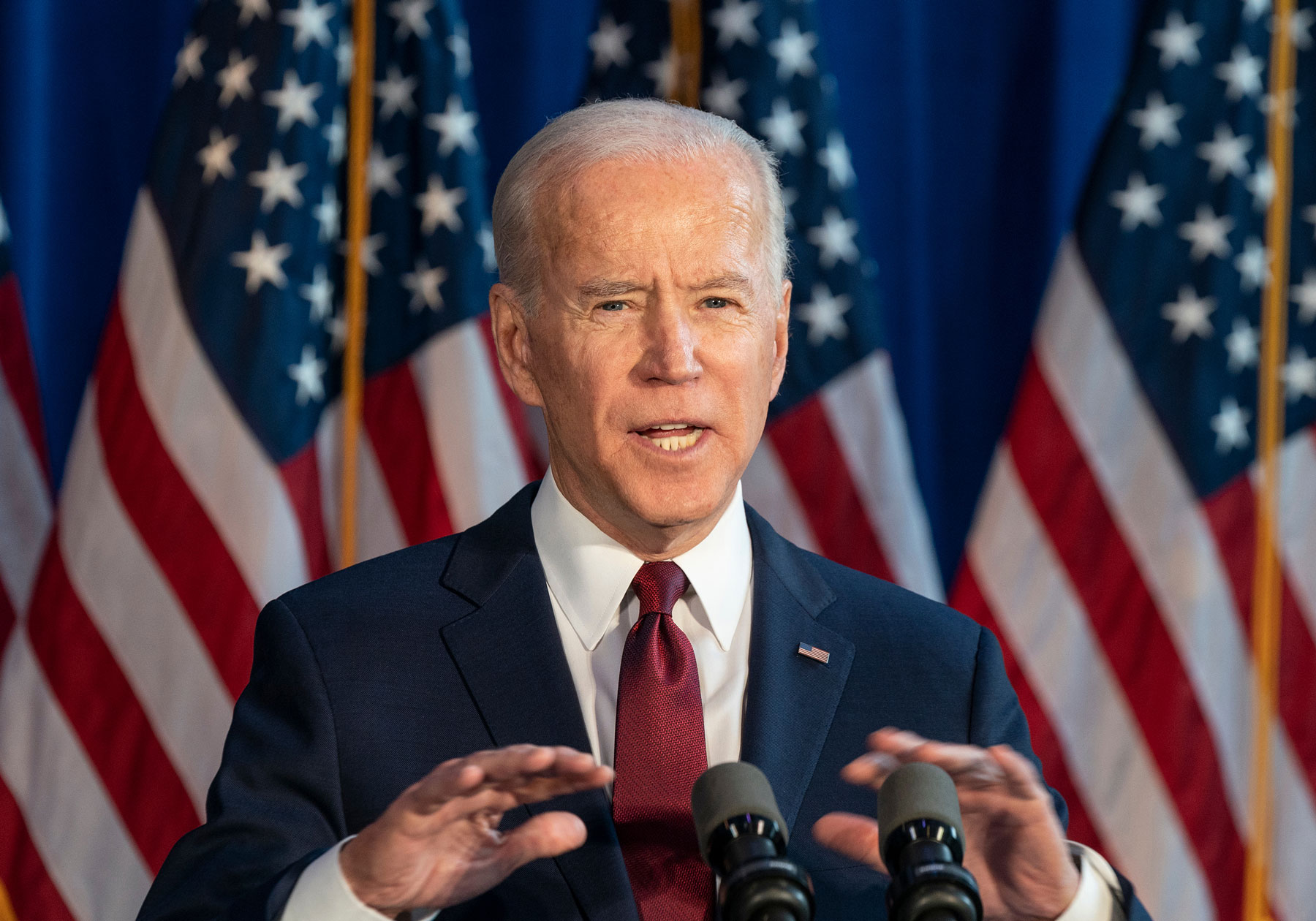
Joe Biden has been in office for just over 100 days and has already achieved a lot in this short time. The largest economic stimulus package in US history has been passed by Congress, and almost 40 executive orders have already been issued – significantly more than under the three previous presidents. And Joe Biden has already fulfilled some of his campaign promises during the first 100 days, such as the goal of vaccinating at least 100 million Americans. Given the situation President Biden faced at the beginning of his term, the speed of the new administration is not surprising.
Although Joe Biden took over the country after the worst economic crisis in post-war history, by January 2021 the economy had bottomed out and had begun to recover. Nevertheless, the output gap – which approximates the utilisation rate of the economy – still amounted to more than 3 per cent. Before the coronavirus crisis the economy was actually being over-utilised by 1 per cent (see G 1). Unemployment had already started to decline, but at 6.3 per cent it was still significantly higher than it had been before the crisis (3.5 per cent) (see G 2). However, the unemployment rate conceals the fact that many people have left the active labour market: the participation rate was 61 per cent at the beginning of this year, down from 63.3 per cent in February 2020. Although these discouraged workers are likely to return to the labour market in the event of a strong recovery, this could then raise the unemployment rate.

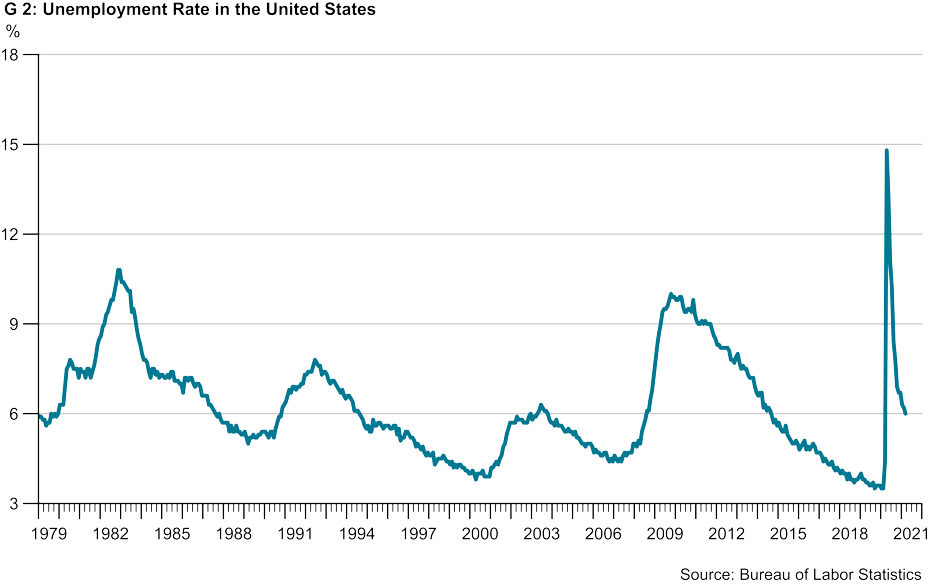
High public debt and narrow majorities
Fiscally, the new government's room for manoeuvre in the future is probably limited. The current administration took office with a budget deficit of almost 15 per cent of GDP and total public debt of 130 per cent of GDP – both record levels in the post-war period (see G 3). This is somewhat put into perspective by the current interest-rate environment: yields on long-term government bonds were just over 1 per cent at the beginning of the year, close to historic lows, making the high debt burden more bearable (see G 4). However, rising yields, as observed recently, further restrict the fiscal headroom available.
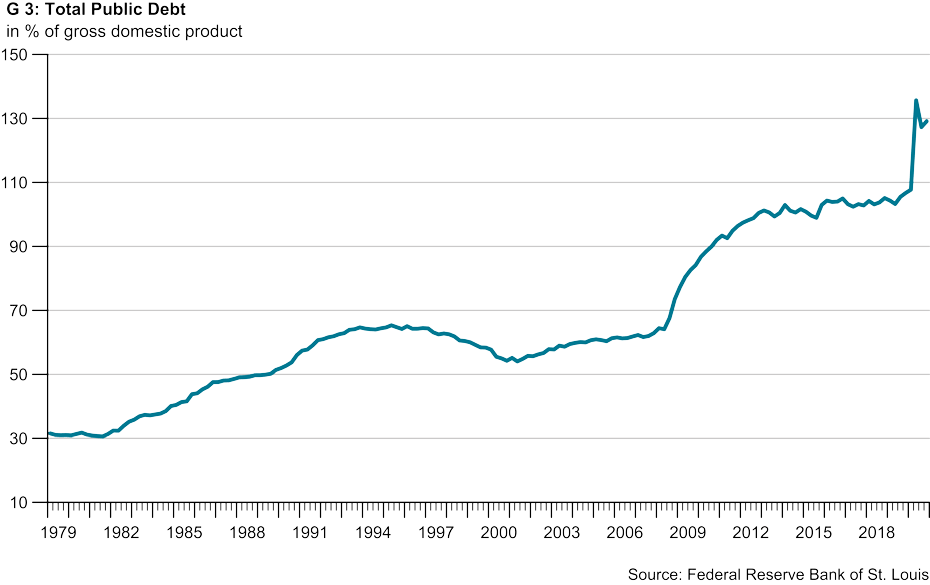
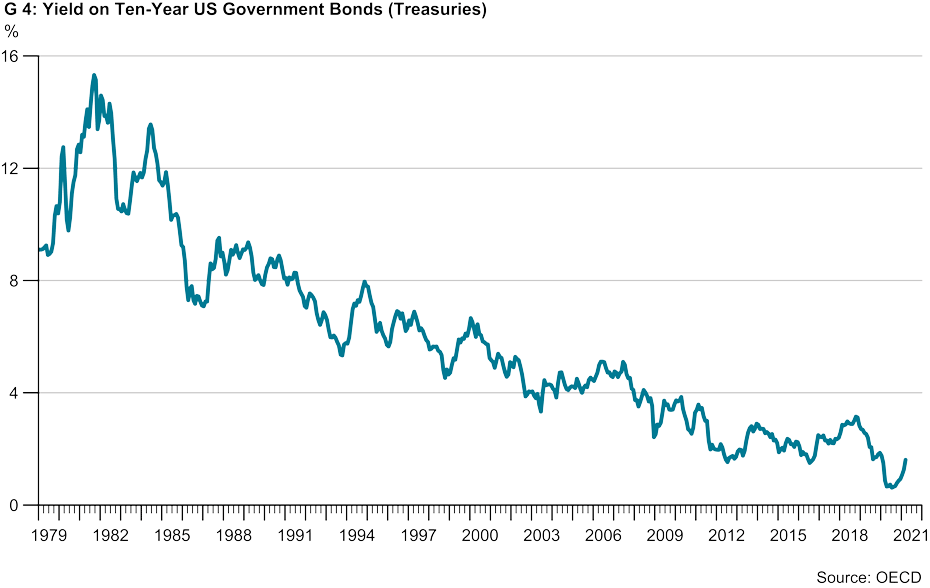
Nonetheless, Joe Biden's administration is probably most limited politically. The Democrats have only a razor-thin majority in the House of Representatives and depend on the vote of Vice President Kamala Harris in the Senate, who decides in the event of stalemates. These situations are quite rare and last occurred during the first few months of George W. Bush's presidency. Such a razor-thin majority enables the imposition of executive and judicial officials nominated by the president as well as the repeal of regulations recently issued by the Trump administration.
In some cases there is also the possibility of progressing certain annual budgetary and tax measures through a process known as 'reconciliation'. Only matters reasonably related to taxation and spending may be included in such bills. Most legislation, on the other hand, requires at least 60 seats in the Senate. Given the existing majorities, this would necessitate cooperation across party lines.
The party landscape is extremely polarised, offering little room for cooperation
However, such cooperation is hardly conceivable in the current situation. The polarisation of the two parties is stronger than ever before in US history. Chart 5 shows the average political stance of the members of the respective parties in the Senate and the House of Representatives. Here, each delegate is assigned a score based on factors such as past voting behaviour.1 While there has always been a certain polarisation of the two-party system in the United States, before the 1990s – and, for a time, under George W. Bush as a result of the terrorist attacks in 2001 – there was regular cooperation across party lines, not least because there was still ideological overlap between the wings of the two parties and, therefore, room for compromise. By the time Obama and Trump were in office, however, there was hardly any such overlap, and in the current Congress, too, the 'most liberal' Republican and the 'most conservative' Democrat in the Senate are far apart in their views. Given the current narrow majorities and the lack of scope for bipartisan cooperation in what is the most polarised Congress in US history, absolute party discipline is necessary, as even one vote is enough to lose the majority in the Senate. This gives individual congressmen, such as conservative Democrat Joe Manchin of West Virginia, above-average power to win concessions on initiatives he deems to be too 'liberal'.
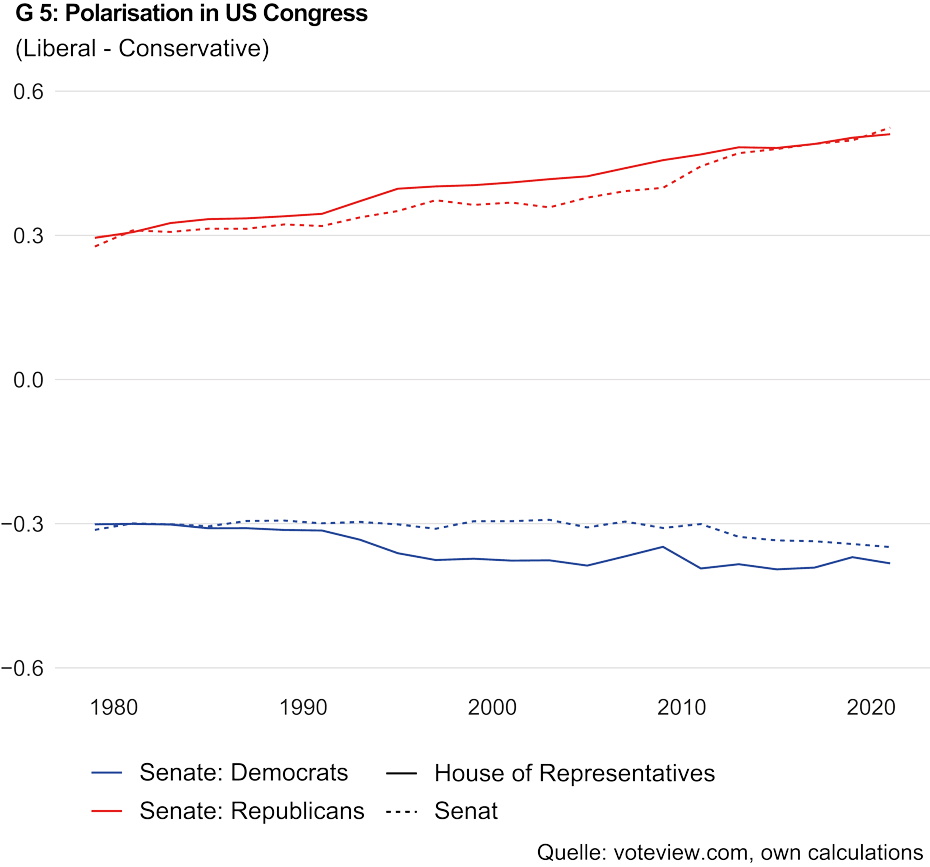
Overall, President Joe Biden's room for manoeuvre is severely limited, both politically and fiscally. Moreover, there is a risk of losing his majority in both houses in the mid-term elections in autumn 2022. This also explains the considerable speed with which the new administration is introducing programmes and directives. The economic situation, on the other hand, may also present an opportunity for Joe Biden. A vibrant and strong economic recovery, falling unemployment, a successful vaccination campaign and, consequently, a rapid opening of the economy could even yield gains in both houses in the mid-term elections.
Ten questions on Joe Biden’s presidency
- How do experts assess Joe Biden's first 100 days in office?
Christa Markwalder, FDP National Councillor and President of the Switzerland-USA Parliamentary Association, is positive about the start of Biden's presidency. “With Biden in office, the White House is once again being governed by facts instead of fake news. In the absence of the Twitter tirades and theatrics commonplace under Donald Trump, things have almost become a bit boring. But that is exactly what the United States and the world need now,” said Markwalder speaking at the KOF Economic Forum on the subject of ‘100 days of Joe Biden. What can Switzerland expect for the next 1,360 days?’. Biden has delivered on economic policy and on fighting the coronavirus pandemic. For example, he achieved his target of 100 million vaccinations in his first 100 days in office after just 60 days and has since increased this total to 200 million. Biden is being helped by the fact that three of the most important vaccines – Moderna/Lonza, Biontech/Pfizer and Johnson & Johnson – are being produced in the United States, which means that the country is located right at the source.
- What is the current state of the US economy?
The US economy has recovered much faster from the coronavirus crisis than Europe. "The economic recovery in the US is in full swing. I expect to see the Roaring Twenties now. Biden is captaining a plane that is about to take off," commented Martin Naville, CEO of the Swiss-American Chamber of Commerce, at the KOF Economic Forum. Given its strong domestic demand, the United States has the advantage over small countries like Switzerland that it is not so dependent on exports. The state of California alone, for example, generates a gross domestic product (GDP) equal to that of Italy. The economic output of Texas is equal to that of Russia. Florida is as rich as the Netherlands.
- Is the US economy at risk of overheating as a result of the stimulus package?
KOF economist and US expert Stefan Neuwirth does not see this danger at present. Despite having declined, unemployment in the US remains high and output potential is still not being fully utilised, so there are currently no price pressures.
- What is the current state of political and economic relations between Switzerland and the United States?
"Switzerland and the US share similar fundamental political values," says Christa Markwalder. Both countries share a long democratic tradition. Economic relations are also close. The cooperation between Moderna and Lonza in vaccine production is a prime example of their economic interdependence, adds Markwalder. After Germany, the United States is Switzerland's most important trading partner. Unlike countries such as Japan, South Korea, Mexico and Canada, however, Switzerland has not yet signed a free-trade agreement with the US.
- Which Swiss industries could benefit from Biden’s economic policies?
"Generally speaking, if the US is doing well, the global economy is doing well," said Stefan Neuwirth, who conducts research on the international economy at KOF. According to Martin Naville, the electronics and pharmaceutical sectors as well as environmental technology and mechanical engineering could particularly benefit in Switzerland.
- Joe Biden was Vice President for eight years under Barack Obama. What did Biden learn from his predecessor?
"Barack Obama was criticised at the time for his stimulus package after the financial crisis being too small," explained Stefan Neuwirth. This time, he said, Biden’s lesson was to implement economic policies according to the guiding principle 'Don’t beat about the bush – just get on with it'. Moreover, Obama’s negotiations with Republicans often proved to be tough and ineffectual, according to Neuwirth’s analysis. That is why, after brief exploratory talks with Republicans had failed, Biden pushed through his stimulus package with his own party’s support but without bipartisan consensus.
- How do experts assess the composition of the Biden administration’s cabinet?
"Biden has put together a highly experienced and diverse cabinet," said Christa Markwalder. Martin Naville also described the Biden cabinet as "professional, experienced and pragmatic". In Kamala Harris, Biden has nominated the first ever woman as Vice President. Secretary of the Interior Deb Haaland is the first female Native American cabinet secretary. Many members of the administration have held high office before. For example, Treasury Secretary Janet Yellen was head of the Federal Reserve until 2018, and former Secretary of State John Kerry has been chosen by Biden to be the President's Special Envoy on Climate.
- Are there any Europeans who were sad to see Donald Trump go?
You almost have to use a magnifying glass to find Trump supporters in Europe. "Nobody was sad to see the back of Trump as a person," said Martin Naville. In contrast to Trump, Biden has integrity, is calm and diplomatic, and is therefore "the perfect president as a person". In terms of economic policies, however, Trump did not get everything wrong, added Naville. For example, he said, Trump cut corporate taxes and unemployment fell sharply under Trump, which benefited the bottom quartile of society in particular. Other US experts, however, argue that the turnaround in the labour market had already begun under Barack Obama (see G 2), from which Trump benefited.
- Is there any criticism of Biden at all?
Yes. The fact that Biden has issued stimulus cheques to the tune of 1,400 dollars to large sections of the population has not only met with approval. Christa Markwalder, for example, fears that this will merely be a flash in the pan: "From a liberal economic point of view, this is not sustainable". Furthermore, Martin Naville is critical of Biden’s planned infrastructure package: although the package is necessary, it is too big. A large proportion of its two-trillion-dollar total is consumptive social spending. Investment – in things such as transport infrastructure, broadband expansion, the upgrading of water supply systems, and new sources of energy – accounts for only a small proportion of the stimulus package. The long-term effects on macroeconomic stability are difficult to assess. Martin Naville is also frustrated by the fact that Biden wants to raise corporate taxes, which were lowered under Trump, in order to finance his infrastructure package. "Introducing the highest tax rate in the OECD in the US is probably not very sensible, especially after the pandemic crisis."
- Will Biden run for a second term, and will Donald Trump return?
Biden has already announced his intention to run for a second term in 2024. Experts do not believe that Trump will return to the political arena. "I don't think there will be a remake of the Trump show. Trump as a person is unlikely to make a successful comeback; the storming of the Capitol was akin to the finale of the Trump presidency," said SRF journalist Arthur Honegger, who worked for many years as a correspondent in the US, at the KOF Economic Forum. Trumpism as a movement, however, is not dead. There is still the potential for a right-wing populist anti-establishment movement in the United States, says Honegger. He continues to fear the polarised political culture there: "It is confrontation rather than consensus that is being sought at the moment in the US."
-----------------------------------
1) The data basis for this can be found external page here.
A video recording of the KOF Economic Forum on the subject of '100 days of Joe Biden. What can Switzerland expect for the next 1,360 days?' is available here.
The next KOF Economic Forum will take place on 11 June and will focus on China as an economic power.
Contacts
No database information available
KOF Bereich Zentrale Dienste
Leonhardstrasse 21
8092
Zürich
Switzerland